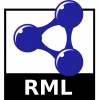Nominees

Unfortunately, raw data does not magically turn into Linked Data (yet)! Linked Data generation and publication remain challenging and complicated, in particular for data owners who are not Semantic Web experts or tech-savvy, while the integration of the ever-increasing amounts of data from multiple sources in different formats into a common knowledge domain remains challenging and complicated.
Initial methods to generate Linked Data involved custom and case-specific or format-specific scripts and tools. However, updating the source code, if changes were needed, was cumbersome. Therefore, mapping languages were defined, which enable a declarative way to specify how Linked Data is generated from raw data. Unfortunately, even though mapping languages are used, Linked Data generation remains a Semantic Web expert task. Linked Data generation is still not convenient for non-Semantic Web experts.
Therefore, to minimize the effort and knowledge that data owners need for the Linked Data generation, we developed a multi-user browser application, the RMLEditor [1,2]. The RMLEditor is a Graphical User Interface (GUI) that assists lay users to generate Linked Data, requiring minimum effort and time. How it works: users provide their data, they define the mappings with the help of the RMLEditor and they instantly generate their Linked Data, as shown at [3]. This way, Linked Data generation becomes easy even for non-Semantic Web exerts!
[1] http://rml.io/RMLeditor
[2] http://link.springer.com/chapter/10.1007%2F978-3-319-34129-3_43
[3] https://www.youtube.com/watch?v=0lPDaghlZoQ
